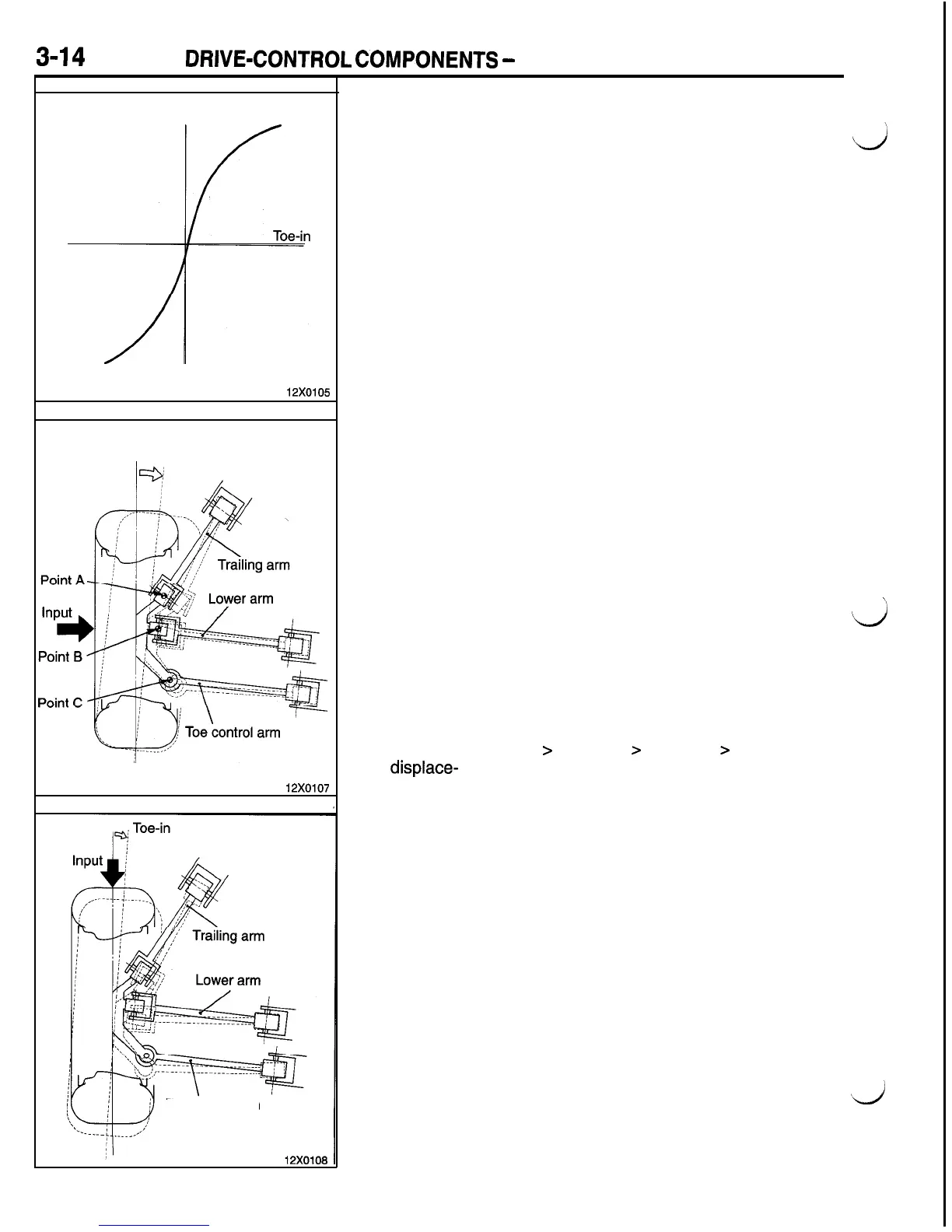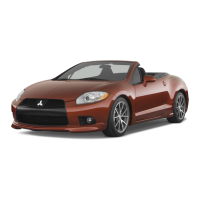3-14
DRIVE-CONTROL
COMPONENTS
-
Rear Suspension
Bump
Toe-out
Rebound
12x0105
Toe-in
12x0107
Toe control
arm
VARIATION IN TOE ANGLE ON TURNS
When the vehicle rolls as it makes a turn, the toe geometry
changes as shown by the characteristics curve at the left under
d
the effect of the toe control arm action. Also, under the side
forces that are generated during a turn, the toe angle of the
outer wheel changes in such a way that the toe-in state will
be maintained thanks to the balance in rigidity of the individual
arms’ bushings properly selected for that effect. These charac-
teristics allow the rear wheels to make directional changes
in phase with the front wheels (steered wheels) during a turn,
assuring better steering stability.
VARIATION IN TOE ANGLE BY SIDE FORCES
Since the side force acting on the tire causes the bushings
at both ends of the trailing arm to twist in an oblique direction,
point A in the illustration is caused to shift toward the center
of the vehicle. The force also acts on the bushings at both
ends of the lower arm in their diametric direction, and point
B is consequently displaced toward the center of the vehicle
by the amount equivalent to the total deflection of the two
bushings (at both ends of the lower arm). The force exerted
to the bushing of the toe control arm also acts in the diametric
\
direction as in the case of the lower arm bushings, but point
d
C is displaced toward the center of the vehicle only by the
amount equivalent to the one bushing’s deflection since point
C is a ball joint.
The amount of the displacement of these points are compared
below.
(Large
Point A
>
Point B
>
Point C
>
(Small
displace- displace-
ment)
ment)
Such being the displacement relationship of the three points,
a toe-in state is maintained even in side force conditions.
VARIATION IN TOE ANGLE BY REARWARD FORCE INPUT
Generally, when the vehicle goes over a projection on road
or when braking, rearward forces will act on the tires and a
toe-out condition will occur because of the resulting compliance
steer. The multi-link suspension, however, maintains a toe-in
state as shown at the left thanks to its proper arrangement
of the individual control arms even when the vehicle goes
over a bump or it is braked and its wheels are subject to
rearward forces.
‘d

